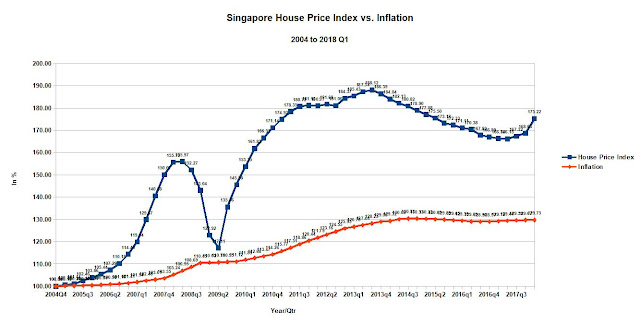Wages have severely lagged labor productivity by a wide margin. Had wages kept up with productivity growth, wages would be closer to $33 an hour than the current $7.25 per hour. Much of the gains in productivity have gone to capital rather than labor, resulting in increasing income inequality.
MIT has a neat Living Wage Calculator to help people estimate the cost of living in a person's community or region. Based on their calculations, the weighted average (given the Civilian Non-Institutional Population in each state) living wage for the entire US is $12.08 per hour. This is almost 40% higher than the weighted average minimum wage of $8.71 per hour for the entire USA and more than twice the national poverty wage of just $5.71 per hour.
| MIT 2017 Living Wage | |||
| By State | |||
| In US$ per Hour | |||
| State | MIT Living Wage | Federal Poverty Wage | Federal Minimum Wage |
| Alabama | $11.14 | $5.80 | $7.25 |
| Alaska | $12.48 | $7.24 | $9.84 |
| Arizona | $11.22 | $5.80 | $10.50 |
| Arkansas | $10.38 | $5.80 | $8.50 |
| California | $14.01 | $5.00 | $11.00 |
| Colorado | $12.47 | $5.80 | $10.20 |
| Connecticut | $12.88 | $5.80 | $10.10 |
| Delaware | $12.44 | $5.80 | $8.25 |
| District of Columbia | $17.11 | $5.80 | $12.50 |
| Florida | $11.75 | $5.80 | $8.25 |
| Georgia | $11.93 | $5.80 | $7.25 |
| Hawaii | $15.39 | $6.66 | $10.10 |
| Idaho | $10.64 | $5.80 | $7.25 |
| Illinois | $12.50 | $5.80 | $8.25 |
| Indiana | $10.70 | $5.80 | $7.25 |
| Iowa | $10.53 | $5.80 | $7.25 |
| Kansas | $10.69 | $5.80 | $7.25 |
| Kentucky | $10.49 | $5.80 | $7.25 |
| Louisiana | $10.91 | $5.80 | $7.25 |
| Maine | $11.60 | $5.80 | $10.00 |
| Maryland | $14.62 | $5.80 | $9.25 |
| Massachusetts | $13.39 | $5.80 | $11.00 |
| Michigan | $10.87 | $5.80 | $9.25 |
| Minnesota | $11.53 | $5.80 | $9.65 |
| Mississipi | $10.86 | $5.80 | $7.25 |
| Missouri | $10.76 | $5.80 | $7.85 |
| Montana | $10.95 | $5.80 | $8.30 |
| Nebraska | $10.60 | $5.80 | $9.00 |
| Nevada | $10.94 | $5.80 | $8.25 |
| New Hampshire | $12.01 | $5.80 | $7.25 |
| New Jersey | $13.72 | $5.80 | $8.60 |
| New Mexico | $10.98 | $5.80 | $7.50 |
| New York | $14.42 | $5.80 | $10.40 |
| North Carolina | $11.36 | $5.80 | $7.25 |
| North Dakota | $10.89 | $5.80 | $7.25 |
| Ohio | $10.47 | $5.80 | $8.30 |
| Oklahoma | $10.52 | $5.80 | $7.25 |
| Oregon | $12.48 | $5.80 | $10.25 |
| Pennsylvania | $11.11 | $5.80 | $7.25 |
| Rhode Island | $12.10 | $5.80 | $10.10 |
| South Carolina | $11.17 | $5.80 | $7.25 |
| South Dakota | $10.03 | $5.80 | $8.85 |
| Tennessee | $10.44 | $5.80 | $7.25 |
| Texas | $11.03 | $5.80 | $7.25 |
| Utah | $11.22 | $5.80 | $7.25 |
| Vermont | $12.32 | $5.80 | $10.50 |
| Virginia | $13.86 | $5.80 | $7.25 |
| Washington | $12.28 | $5.80 | $11.50 |
| West Virginia | $10.68 | $5.80 | $8.75 |
| Wisconsin | $11.03 | $5.80 | $7.25 |
| Wyoming | $10.63 | $5.80 | $7.25 |
| National USA | $12.08 | $5.71 | $8.71 |
Based on these figures, the gap between the minimum wage and living wage for each state is the highest in Virginia, where the minimum wage of $7.25 per hour is just 52% of a statewide living wage of $13.86 per hour. The state of Washington has the most livable minimum wage. Its statewide minimum wage of $11.50 per hour is more than 90% of its computed living wage of $12.28 per hour.
| State | Minimum Wage/Living Wage |
| Washington | 93.65% |
| Arizona | 93.58% |
| South Dakota | 88.24% |
| Maine | 86.21% |
| Vermont | 85.23% |
| Michigan | 85.10% |
| Nebraska | 84.91% |
| Minnesota | 83.69% |
| Rhode Island | 83.47% |
| Massachusetts | 82.15% |
| Oregon | 82.13% |
| West Virginia | 81.93% |
| Arkansas | 81.89% |
| Colorado | 81.80% |
| Ohio | 79.27% |
| Alaska | 78.85% |
| California | 78.52% |
| Connecticut | 78.42% |
| Montana | 75.80% |
| Nevada | 75.41% |
| District of Columbia | 73.06% |
| Missouri | 72.96% |
| New York | 72.12% |
| Florida | 70.21% |
| Tennessee | 69.44% |
| Kentucky | 69.11% |
| Oklahoma | 68.92% |
| Iowa | 68.85% |
| New Mexico | 68.31% |
| Wyoming | 68.20% |
| Idaho | 68.14% |
| Kansas | 67.82% |
| Indiana | 67.76% |
| Mississipi | 66.76% |
| North Dakota | 66.57% |
| Louisiana | 66.45% |
| Delaware | 66.32% |
| Illinois | 66.00% |
| Texas | 65.73% |
| Wisconsin | 65.73% |
| Hawaii | 65.63% |
| Pennsylvania | 65.26% |
| Alabama | 65.08% |
| South Carolina | 64.91% |
| Utah | 64.62% |
| North Carolina | 63.82% |
| Maryland | 63.27% |
| New Jersey | 62.68% |
| Georgia | 60.77% |
| New Hampshire | 60.37% |
| Virginia | 52.31% |
Source: MIT Living Wage Calculator
What Is the National Living Wage?



















































